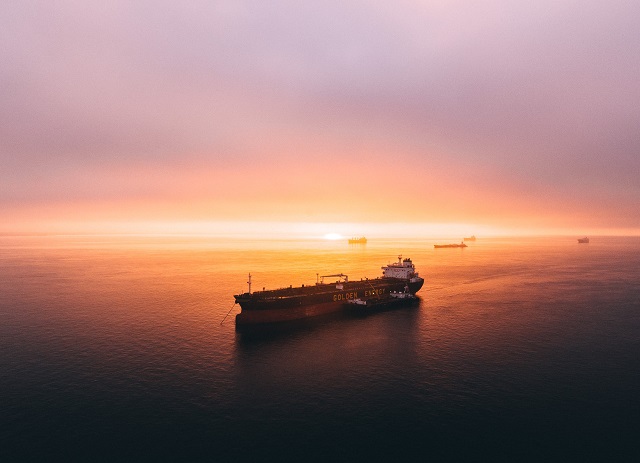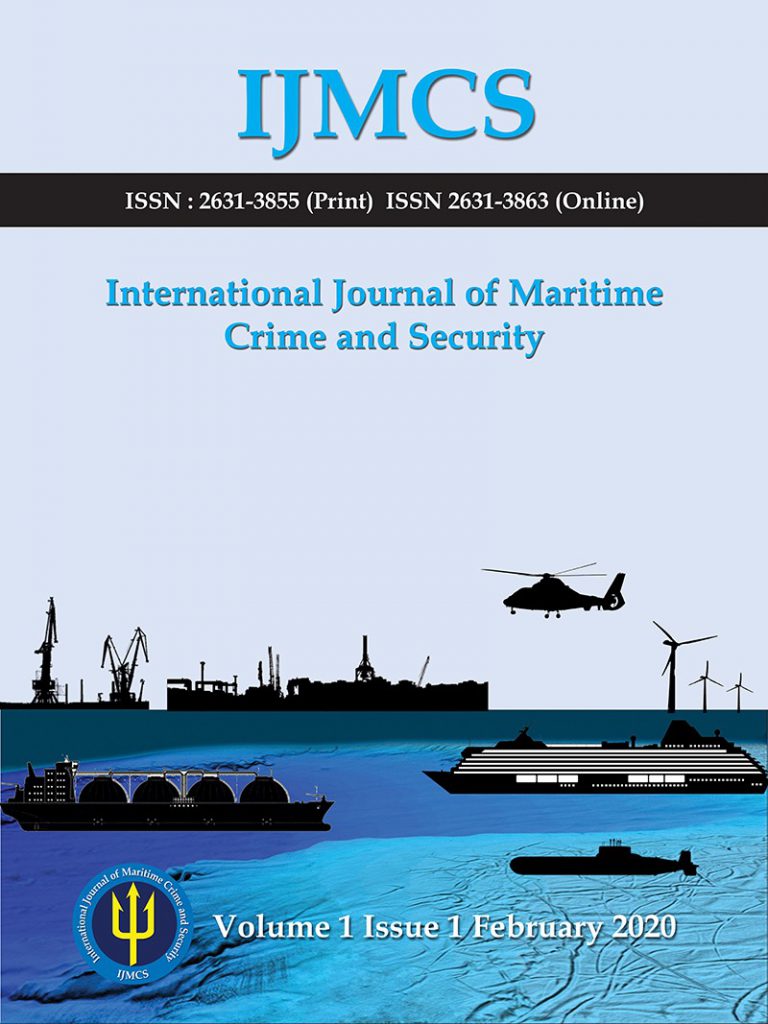by Chris Bellamy
This paper explores what is meant by ‘Maritime Crime’ and ‘Maritime Security’, building on the work of Natalie Klein and Christian Bueger. The term Maritime Security means different things to different people, while Maritime Crime, whereas perhaps easier to define, has been neglected by criminologists and crime scientists whose perspective has largely remained landlocked. Given the enormous value of maritime assets – not just ships but offshore energy platforms, wind turbines, ports and harbours – this is a strange omission.
The seas carry some 90 percent of world trade by volume and 70 percent by value and cover 71 percent of the earth’s surface. International communication depends on undersea cables. The value of seaborne traffic, whether goods, raw materials or information, makes it supremely attractive to criminals. It also acts as a magnet for fraud. An obvious manifestation is the continuing scourge of piracy, which, while technically a crime, straddles the porous border between crime and security studies. Increasing automation also increases vulnerability to cyber-attack. The paper draws on other scholars’ earlier work and identifies two different if complementary approaches.
A ‘negative’ approach, which sees ‘security’ as protection against a range of threats, and a ‘positive’ approach which seeks to build good order at sea and on the littoral shore and to make sustainable use of the seas’ and oceans’ vast resources. This includes the development of the ‘Blue Economy’. Although sea levels may rise with global warming, paradoxically a process of territorialisation is underway as states seek not only to exploit their Exclusive Economic Zones but even to extend them, by utilising the provisions of the 1982 UN Convention on the Law of the Sea. Thus, in a political and legal sense the ‘high seas’ are not rising at all but being stripped away.
Introduction
Roll on, thou deep and dark blue Ocean,—roll!
Ten thousand fleets sweep over thee in vain;
Man marks the earth with ruin,—his control
Stops with the shore;—upon the watery plain
The wrecks are all thy deed, nor doth remain
A shadow of man’s ravage, save his own,
When, for a moment, like a drop of rain,
He sinks into thy depths with bubbling groan,
Without a grave, unknelled, uncoffined, and unknown.
(Byron 1818: IV, 139)
When Lord Byron penned these resounding lines, more than two hundred years ago, they were pretty accurate. Then, his view that man’s ‘control’, governance and jurisdiction over most things stopped with – or close to – the shore was a fair one. Until the UN Convention on the Law of the Sea (UNCLOS) of 1982, most states’ territorial seas stopped just three nautical miles – the maximum range of a cannon of Byron’s time – from the shore. By 1818 the first steam powered boats had just been constructed, but travel across the mighty oceans was still uncertain, unpredictable and extremely hazardous. Propulsion was by sail, sometimes supplemented by oars, which made maritime transport, albeit expertly aided by the very latest advances in science and technology, still completely dependent on the capricious winds, currents and tides. Ships themselves were tiny, fragile bits of the national territory, and their captain’s kings within their tossing and vulnerable domains. They were, effectively, space capsules far from their parent planet.
Two hundred years on, powerful mechanically powered ships, made even more supremely efficient by information technology, have largely – but by no means entirely – overcome the capricious command of the elements. Furthermore, since 1982, states may claim all the resources – animal, vegetable and mineral – within Exclusive Economic Zones (EEZs) stretching out to a maximum of 200 nautical miles. That is assuming no-one else’s EEZ coincides, in which case the sea between is split according to a determination of the Commission on the Limits of the Continental Shelf (CLCS) (see below). Where the earth’s configuration so permits, States may even stake claims, as the Russians have as far as the North Pole, to their Outer (see below) – or Extended – Continental Shelves and the waters above, out to 350 miles. And, finally, modern technology has enabled technologically sophisticated powers to enhance, expand and build up natural features, such as sandbanks and reefs, to create artificial islands which can then be claimed as ‘their’ territory. China has clearly been doing this in the South China Sea (Island Building in South China Sea 2015) Therefore, what were once the ‘global commons’ – the high seas – have been, and are being, increasingly territorialised.
Yet, perversely, ironically and counter-intuitively, the study of maritime crime and security has remained, like Byron’s ruinous reign of man, largely landlocked. That applies to the scientific study of crime, in particular, an omission that was noted more than 30 years ago (Mueller and Adler 2018: 18). This is covered in Section 3, below.
Click Here to Read the Full Text of the Paper

Chris Bellamy is Professor Emeritus of Maritime Security at the University of Greenwich where he was Director of the Greenwich Maritime Institute from 2010 to 2014. In 2018 he completed a Visiting Fellowship as part of the Oxford Changing Character of War programme at Pembroke College, Oxford, on Non-linear warfare in Russian Military Thought. In a 47-year career in Defence and Security he has been an officer in the British Army, a civil servant in the UK Ministry of Defence, Defence Corresponent of the Independent and, before joining Greenwich, was Director of the Cranfield University Security Studies Institute at the Defence Academy of the UK at Shrivenham. He is the author of eight major books and in 2008 won the Westminster Medal for Military Literature for Absolute War: Soviet Russia in the Second World War (Pan Macmillan, 2007).
























